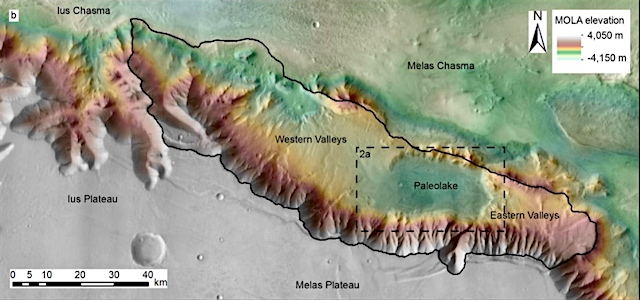 [Editor’s note: From a paper by Joel Davis and five co-authors recently published in the Journal of Geophysical Research.]
[Editor’s note: From a paper by Joel Davis and five co-authors recently published in the Journal of Geophysical Research.]
Episodic and Declining Fluvial Processes in Southwest Melas Chasma, Valles Marineris, Mars
• Episodic fluvial processes occurred in the southwest Melas basin, Valles Marineris, Mars, likely during the Hesperian period
• Evidence for multiple “wet and dry” periods is preserved in the fluvial systems and paleolacustrine deposits
• Local Valles Marineris climate likely supported runoff and precipitation and transitioned from perennial to ephemeral conditions
There is strong evidence that liquid water was widespread on ancient Mars (prior to 3.7 billion years ago) and features such as rivers and lakes were common. However, it is unclear how Mars changed from this relatively wet state to the cold and dry planet we see today.
Using high‐resolution satellite images, we investigate part of the canyon system Valles Marineris, near the equator. This region of Valles Marineris, the southwest Melas basin, forms a depression, and contains sediments and landforms which are from this middle period of Mars’ history. We examined both the sediments and landforms and found they most likely formed due to the presence of river valleys and channels and lakes.
We find that the southwest Melas basin had repeated wet and dry periods, when the rivers and lakes dried up, before later refilling. During this time, hundreds of meters of sediment was deposited and eroded in the basin. This wet and dry cycle repeated several times, before ultimately ceasing.
We also find that river valleys were present on the plateaus of Valles Marineris, above the basin. Our results suggest that liquid water persisted after 3.7 billion years ago, at least locally on this part of Mars. [More at link]








